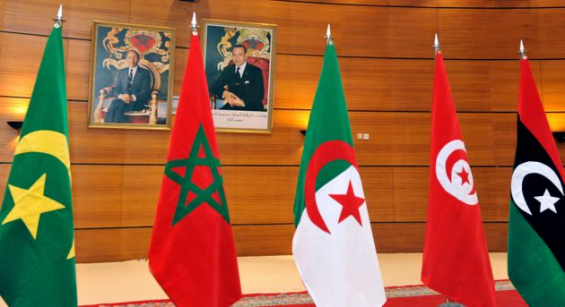The Maghreb region has been relatively less affected by the current health crisis, especially when compared to European countries, such as Spain, France and Italy. These three countries are geographically close to the Maghreb and house a large part of its diaspora : Algerians, Moroccans and Tunisians.
When the virus first appeared in these three countries, their authorities took precautionary measures rather early, closing borders, imposing strict lockdown measures as well as mandatory facemasks in public. These proactive measures, motivated by the vulnerability of the healthcare system in these three countries, have so far prevented a similar scenario to the one witnessed in France, Italy, Spain, the United Kingdom and the United States, between others.
The generally reassuring situation in the Maghreb was a result of paths that were somewhat similar for a long time before taking different turns.
Algeria : The rollercoaster
With more than 5,700 confirmed coronavirus cases and around 500 deaths, Algeria is the country whose situation is the most worrying in the Maghreb region. Indeed, the number of daily new cases continues to rise without reaching a peak.

The low number of tests performed explains the decrease in daily cases in April. With only 6,500 coronavirus tests, it seems that only the cases with severe symptoms were being counted.
But in Algeria, the containment measures were very random. The government’s hesitation has helped keep a large portion of the population in a state of mistrust, as the country had just left the Hirak behind.
After a rather uneventful month of April, the number of cases continued to grow significantly throughout the end of the month and early May.

One reassuring thing is that despite the growing number of confirmed cases, the total number of fatalities has slowed down. The Algerian Minister of Health, Abderahmane Benbouzid, recently explained that this trend is to be attributed to the use of the chloroquine-based therapeutic protocol.
Morocco at a crossroads
Morocco has just reached 6,000 Covid-19 cases. After registering a peak around mid-April, the end of the same month witnessed a decline. But the situation became worrying by May, when the number of daily confirmed cases started growing again.

While part of the population shifts the blame on those who do not respect social distancing measures, health authorities indicate that most of the new confirmed cases are those who were in close contact with previously confirmed cases.
Indeed, for a few weeks, people who were deemed asymptomatic and were in close contact with previously confirmed cases have tested positive and are hence being counted in the total number of confirmed cases.
Recoveries, however, have been on the rise, stabilizing the curve of active cases. This, however, may not last for too long, especially with the loosening of confinement measures and the appearance of new hotspots.

The silver lining is that the fatality curve is getting closer to 0 after the peak registered during the first fortnight in April. These encouraging results can be explained by a better knowledge of the disease, the use of dual therapy hydroxychloroquine and azytromicine, but also early and systematic screening.
Tunisia, a glimpse of hope
With just over 1,000 positive cases and 45 deaths, among its Maghreb peers, Tunisia is the least affected country by the pandemic. After a peak at the end of March, a decline followed by a second small peak in mid-April, the country is close to the end to the health crisis with a few scattered daily cases.

The curve of active cases describes this reassuring trend, with a peak in mid-April and a decline which accelerated in early May. The mortality rate is close to that of Morocco. The significant rate of recoveries coupled with the low number of new cases have made it possible to see the light at the end of the tunnel.
As for its Maghreb neighbors, Tunisia has resorted to a treatment based on chloroquine. However, these encouraging results did not lead to early deconfinement on May 24, as was previously scheduled.

On May 8, the Tunisian Minister of Health, Abdellatif Mekki, called on his compatriots not to drop the precautionary and social distancing measures which helped to curb the spread of Covid-19.
End of lockdown, tests and repatriation
With a similar tone, the Health Minister of Morocco insisted that the end of the lockdown would be possible only if the infection rate (R0) is below 1 for more than two weeks.
Morocco is expected to end the state of health emergency and the lockdown measures on May 20, but that scenario is unlikely. Mohamed Lyoubi, the head of epidemiology department, referred to a gradual end of the containment. The same debate is underway in Algeria, depending in particular on the mortality rate and the number of new infections.
But whatever the dates of progressive or national deconfinement are, the three countries will have to reinforce the control of sanitary measures, to avoid a massive resurgence of the disease. The crucial element will remain the generalization of tests.

Algeria today pays for the low number of tests in April (average of 148 tests per million inhabitants). Morocco, after a slow start, is catching up (average of 1,786/1 M) on Tunisia, which has always practiced widespread screenings (average of 2,479/1 M). The measure was probably one of the reasons behind the success of the epidemic control in the country.
If the Achilles heel of Algeria lies in testing, Morocco’s stems from its refusal to repatriate its citizens stranded abroad, while Algeria and Tunisia have operated special flights for their nationals. At the end of the day, there is not much lacking to speak of a United Maghreb, just like the reassuring epidemiological situation for the three Maghreb countries.





 chargement...
chargement...












